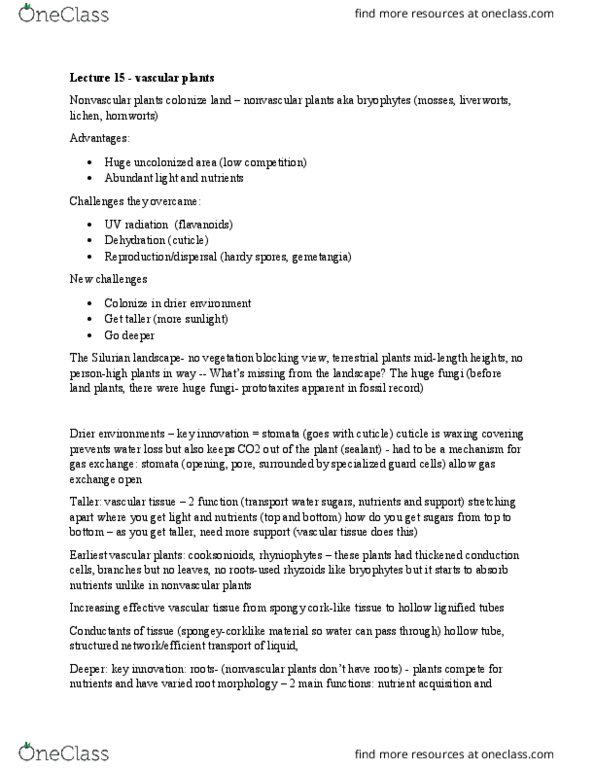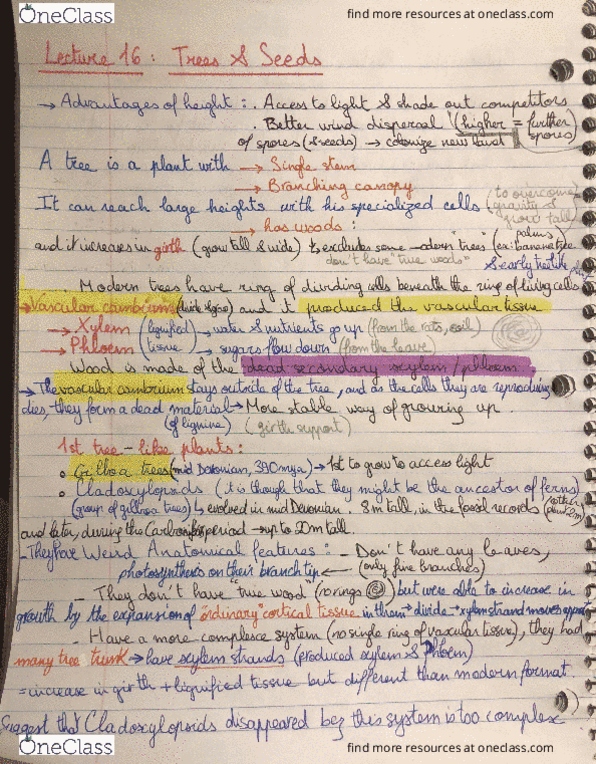BIOL 111 Lecture Notes - Lecture 15: Non-Vascular Plant, Prototaxites, Rhyniopsida
BIOL 111 verified notes
15/26View all
Document Summary
Nonvascular plants colonize land nonvascular plants aka bryophytes (mosses, liverworts, lichen, hornworts) Advantages: huge uncolonized area (low competition, abundant light and nutrients. Challenges they overcame: uv radiation (flavanoids, dehydration (cuticle, reproduction/dispersal (hardy spores, gemetangia) New challenges: colonize in drier environment, get taller (more sunlight, go deeper. The huge fungi (before land plants, there were huge fungi- prototaxites apparent in fossil record) Earliest vascular plants: cooksonioids, rhyniophytes these plants had thickened conduction cells, branches but no leaves, no roots-used rhyzoids like bryophytes but it starts to absorb nutrients unlike in nonvascular plants. Increasing effective vascular tissue from spongy cork-like tissue to hollow lignified tubes. Conductants of tissue (spongey-corklike material so water can pass through) hollow tube, structured network/efficient transport of liquid, Devonian period- age of forests (or fish) - after silurian period- by mid devonian- shrublike forests of lycophytes, ferns, and horsetails (competition for light --> leaves) competition for nutrients and need for support=roots, late devonian period-world"s first forests.




